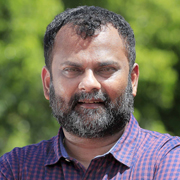Despite the pandemic blow, missile scientists held on to the hypersonic dream | HSTDV series Part-2

Mail This Article
Bengaluru: Over a decade of complex R&D invested in India’s Hypersonic Technology Demonstrator Vehicle (HSTDV) helped India develop several critical technologies.
In this part of the Onmanorma series ‘HSTDV Story’, we take a look at the new technologies developed, the work undertaken and the challenges posed by the recent successful mission.
In the last one decade, missile scientists have made several design changes on HSTDV, mainly in panel separation and cruise vehicle (CV) ejection mechanisms.
A top scientist who is part of the HSTDV mission told Onmanorama that till 2016, the scientists carried out extensive ground testing.
“There were innumerable tests, and we were all excited at the challenges the mission offered. The tests were mainly for the thermo-structural testing of the launch vehicle and cruise vehicle airframes, static and dynamic tests for upper stage panel separation and for cruise vehicle ejection mechanism.”
From 2016 to 2020, the flight hardware sections were realized, and the assembly and integration work was carried out.
“The ‘one vehicle into another vehicle’ concept was successfully attempted in mechanical integration. In the last two years, extensive ground resonance testing was carried out to understand the structural dynamics of the twin vehicle system. Finally, the recent successful flight testing validated our efforts,” the scientist said.
Key Technologies
There were several challenging technologies that India needed to master to make the HSTDV mission successful. The key technologies are listed below:
* Aero-propulsion integrated design (with specific emphasis on flow path of the vehicle, hypersonic intake design and aerodynamic design of the cruise vehicle).
* Scramjet engine technology, including scramjet engine flow path, engine attachment and single expansion ramp nozzle, fuel injection strategies, and flame holding schemes.
*Aerothermodynamics design of cruise vehicle (hot structures design with emphasis on thermal stresses).
* Panel separation mechanism in hypersonic regime.
*Twin vehicle (one into another) concept (attachment of cruise vehicle to booster, modal prediction).
* Thermal barrier coating technology.
Asked to explain the HSTDV mission in layman’s terms, the scientist said that the objective is to demonstrate the free-flying mode of a hypersonic vehicle flight.
“Reach long distances — say 2,000 km in 16 minutes. Or to travel from Bengaluru to Delhi in 16 minutes! The speed is very high for these vehicles. Thrust is produced by burning hydrocarbon fuel in a rectangular duct and expanding the burnt gases through a nozzle to produce thrust,” he added.
Many Lessons
The HSTDV team said that understanding the structural dynamics of airframe was the thin line between failure and success.
“We learnt many lessons from the previous test. We relocated certain critical rate sensors, carried out design modifications based on dynamical behaviour of one airframe section and provided adequate support features for the cruise vehicle during the ascent phase. Mere design changes and other minor changes weren’t adequate unless we tested them. So, we carried out extensive ground resonance testing of the integrated vehicle to build confidence. This resulted in the success of the mission,” said the scientist.
Among the key challenges posed by the latest mission, another core team member said that the work during Covid-19 pandemic period was unforgettable.
“When the entire world was trying to be safe at home, there was a highly motivated team of DRDO scientists which kept working during the pandemic. A small team of scientists worked tirelessly, bringing lunch boxes and water bottles from home, as there was complete shutdown of canteen facilities in the lab. The great support extended by their families despite of the fear of Covid-19 should be appreciated,” the scientist recalled.
Most scientists with whom Onmanorama interacted said that working in DRDL always gave a homely feeling even during the Covid-19 time, but their biggest fear was travelling to Dr A P J Abdul Kalam Island in Odisha, especially inside the closed hangar.
“We kept working all through the day and at the island as D-day approached. In the last one week (ahead of the September 7 launch), when the final integration work was kicking off, one of the scientists hailing from Uttar Pradesh lost his father. The scientist preferred to stay at the island and completed the integration work. We were all touched by his gesture,” a scientist recalled.
Team Spirit
While the HSTDV team went through the grind, overcoming every hurdle, the DRDO top management ensured that the mission did not lack any kind of support whatsoever.
DRDO Chairman Dr G Satheesh Reddy, who is said to have given a fresh impetus to the mission, constantly reviewed various technological goals of the project.
M S R Prasad, DG (MSS), DRDO and Dr Dasharath Ram, Director, DRDL provided extensive technical support towards solving many technical issues.
B H V S Narayana Murthy, Director, RCI and M R M Babu, Director, ASL monitored the technical activities to ensure the success of the mission.
“The support and encouragement motivated the team. Considering the magnitude of the flight test, the team was well aware that the success of this mission would put India in the forefront of hypersonic technology,” the scientist said.
The present HSTDV team consists of 12 scientists and around 15 technical engineers. The average age of the scientists is around 43 years and of technical engineers, around 28 years.
Interestingly, most of the HSTDV team members are avid sports lovers.
(The writer is an independent aerospace and defence journalist, who blogs at Tarmak007 and tweets @writetake.)


